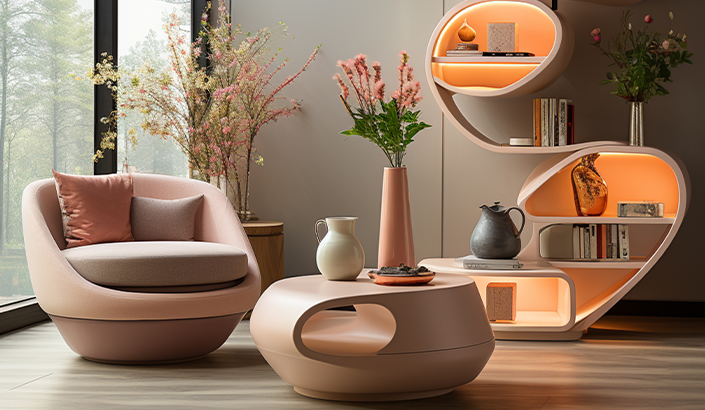
Choosing the Furniture for Small Spaces: Tips for Maximizing Space and Comfort
Living in a small space doesn't mean you have to compromise on style or comfort. With the right furniture choices, you can create a cozy and functional environment that makes the most of every square foot. Whether you're in a city apartment, a tiny home, or simply looking to optimize a small room, here are some tips to help you select the perfect furniture for your space.
1. Embrace Multifunctional Furniture
One of the best strategies for maximizing a small area is to invest in multifunctional furniture. Pieces that serve more than one purpose can save space and add versatility to your home. Consider a sofa bed or a daybed that can accommodate guests overnight. An ottoman with hidden storage can double as a coffee table or extra seating while keeping clutter out of sight. Look for benches that open up to reveal storage compartments, and consider a dining table that can extend or fold away when not in use.
2. Opt for Vertical Storage Solutions
When floor space is limited, think vertically. Tall bookcases, wall-mounted shelves, and hanging storage units can help you utilize every inch of space without crowding the room. Consider installing floating shelves to display books, plants, or decorative items. A wall-mounted desk can create a compact workspace that disappears when not needed. By using your walls creatively, you free up floor space and maintain a clean, open feel.
3. Prioritize Light and Neutral Colors
In small spaces, color can play a significant role in how large the room feels. Light and neutral tones reflect more light, making a space feel airy and open. Choose furniture in shades of white, cream, beige, or light gray to create a calm and expansive atmosphere. If you love color, add pops through accessories like cushions, rugs, or artwork, which can be easily changed to refresh the room's look.
4. Choose Furniture with Slim Profiles
Bulky furniture can overwhelm a small room, so it's essential to choose pieces with sleek, slim profiles. Look for sofas and chairs with slender arms and legs, which contribute to a more open and breathable space. Glass or acrylic tables can also create an illusion of more space by allowing light to pass through, making them an excellent choice for tight areas.
5. Scale Furniture to Fit the Room
When selecting furniture, it's crucial to consider the scale in relation to the room's size. Oversized pieces can dwarf a small space, while too many small items can result in a cluttered look. Instead, aim for a balanced approach by mixing varying sizes and shapes. A compact loveseat paired with a small coffee table can create a comfortable living area without overwhelming the room.
6. Arrange for Optimal Flow
The layout of your furniture can significantly impact how functional and spacious your room feels. Arrange pieces to create a natural flow and leave sufficient walking paths. Avoid blocking windows and doorways, as these are key to maintaining light and accessibility. In open-plan spaces, use furniture to delineate different zones, such as using a bookshelf as a room divider or a rug to define a seating area.
7. Create a Cozy Atmosphere
Finally, don't forget to infuse your space with warmth and personality. Layering different textures—such as soft throws, plush rugs, and textured cushions—can add depth and comfort to a small room. Personal touches like artwork, plants, and decorative accessories make the space feel inviting and uniquely yours.
By thoughtfully selecting and arranging your furniture, even the smallest space can become a functional and stylish haven. With these tips, you'll be well on your way to creating a home that feels as spacious as it is cozy.



